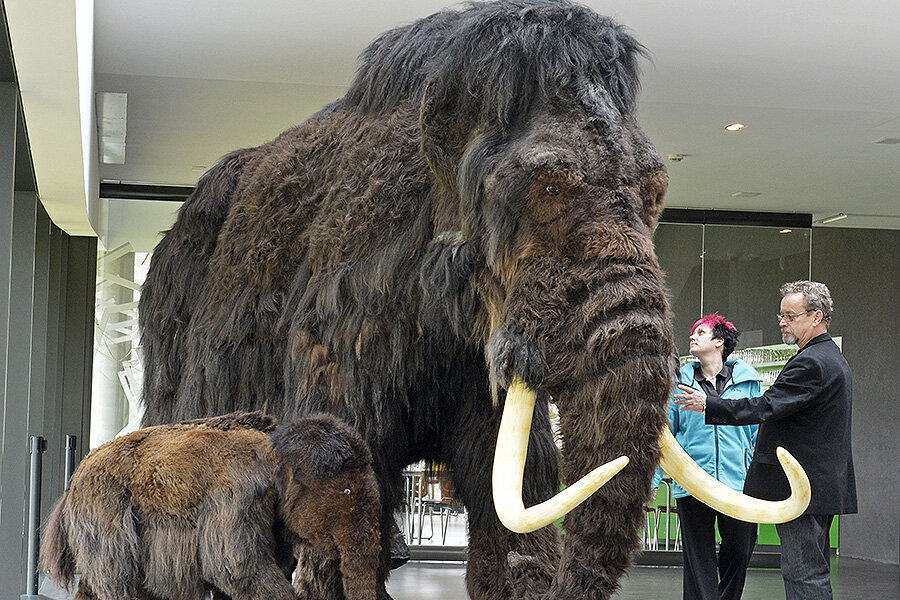Delay of game: Mammoth bone discovered at Oregon State University stadium
Construction workers expanding Oregon State University's Reser Stadium ran into a mammoth problem on Tuesday, when the crew unearthed a femur bone from one of the prehistoric creatures.
Archaeology students and Professor Loren Davis were "giddy" about the chance to excavate the mammoth right on campus.
"There are quite a few bones, and dozens of pieces," from a variety of species including bison and camels, Professor Davis said in an OSU press release. Dr. Davis, an OSU associate professor of anthropology, was called to the 10-foot pit after the construction crew came across the femur, and plans to have anthropology students sift through the rest of the site.
So far, they've seen no traces of human activity, and believe that the mammoth died naturally about 10,000 years ago, possibly getting stuck in a boggy marsh.
"That's pretty exciting stuff that's right below our feet," Davis says in a video posted to Twitter.
Mammoth bones aren't too rare, he says, but this one is "an amazing find." "For me it was a very beautiful moment," OSU alumna and football facility employee Hallie Borgen told the Corvallis Gazette-Times.
Expansion of that corner of the University's Valley Football Center have been temporarily put on hold as experts examine the site, which will one day be a locker room for OSU teams. They'll also send bones for carbon testing to determine their age, and are keeping them in water to avoid deterioration in the meantime.
Today, Oregon State's teams are named after Benny Beaver, who would be dwarfed by the new find. So would the team's biggest player, who is 6'3" and 346 pounds, according to Sports Illustrated. Mammoths stood about 10 feet tall, and weighed in between 6 and 10 tons.
Benny's mascot job is probably safe for now. Mammoth mascots at US schools seem few and far between, if any, perhaps because many Americans today associate them with Sesame Street's cuddly Snuffleupagus (whose lack of tusks keeps his image benign).
Two hundred and fifty years ago, however, mammoths enjoyed a moment in the limelight, becoming something of a national symbol as Americans and Europeans battled over whose beasts were bigger and badder – a point of pride as Old World naturalists tried to argue that the New World was inherently "degenerate."
When the first mammoth tooth of the Americas was dug up in 1705, it was believed to be a giant, according to Smithsonian's Richard Conniff. After scientists realized that wasn't the case, they latched onto the mammoth as their "our-animals-are-bigger-than-yours" trump card, challenging Europeans to come up with something so monstrous.
Thomas Jefferson, a mammoth fan who hoped Lewis and Clark might find some in the Louisiana Purchase, also pushed back on the "degenerate" theory, criticizing the idea "that Nature is less active, less energetic on one side of the globe than she is on the other. As if both sides were not warmed by the same genial sun."
Although early naturalists didn't get all the facts straight on mammoths – they thought they were meat-eaters, for instance – the discovery did lead to a major shift in scientific understanding. After failing to turn up any living specimens, scientists had to conclude that it was possible for animals to go extinct: a heretical idea at the time.







